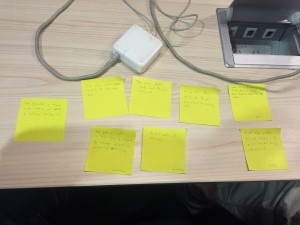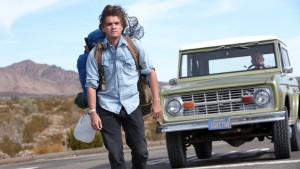Decision Made!
After deep consideration about the the viability of the different mediums available and how we wanted to present what we had available to us, Dylan and I decided to go with website to present our ideas. Having Dylan in class was relieving as he is a person full of creativity and ideas. We choose website as a form to present our ideas mainly because it is kind of hard to explain about our topic in different forms and also due to the lack of discussion we had among us three. But hey, at least we have come up with something which we find could be more informative since we are talking about serious issues.
Here are some of the copy of the email sent by Dylan to Daniel and I to show our progression of our ideas.
7/5/15
‘Alright boys, we’re finally getting somewhere!
Factoring in the brief amount of time we have to get a prototype artefact, combined with the wide range of material to choose from at this point, we’ve decided to present our theme in the form of a website. I will be developing this, and will have a prototype (lacking in written and visual content) by next week pretty easily.
Ariff and I have broken it down into 4 pages at this point:
Home Page:
- Introduction
Understanding the Audience
- Definition of an audience
- Discussing audience theory
- An interpretation of the factors that make up an audience reading
Old Media vs. New Media
- Comparison of audience culture
- The introduction of technology that shapes the audience
- Globalisation of the audience
Role of the Audience
- The media-audience relationship
- Consumer vs. Prosumer
- The mass audience vs. the individual
Breaking it up in this form allows us to assign a topic to each member based on the group’s research, which we have to make available to each other on the groups google drive folder by tomorrow. The website form also allows us to make changes or expand our scope at any time, so have a think about what we really want to put up on there.
We’re hoping to another meeting next Tuesday at 12:30, most likely in the atellior space (building 9, floor 2). We can discuss more specific stuff then and decide what everyone wants to do going forward. We will also need to come up with a visual style for the site, so we’ll have to discuss colours, images, tone etc.
Thanks guys,
Dylan’
‘To build upon this, each point needs to have an argumentative element to it. This isn’t a summary of these areas, we need to provide research evidence purely as the basis of our point. We have discussed the importance of case studies to present these ideas and made a couple more decisions (or suggestions, in some cases).
Ariff will explore a case study for globalisation, perhaps based in part on his own experiences. For this reason, he’ll be assigned to ‘Old Media vs. New Media’.
For the ‘Role of the Audience’ page, some possible case studies would be social media platforms (facebook, twitter) or creator platforms (youtube, vimeo). Changes in media usage are also relevant here (like the figures that were presented to us in the audience lecture the other day)
‘Understanding the Audience’ has a smaller scope, but we could also possibly discuss ideas based around marketing/advertising of products within this, or audience culture surrounding reviews of movies/TV/games.
It is also possible to do an almost character-bio-esque setup for the site, discussing our own usage of the media and highlighting the differences between us as ‘an audience’ to highlight the individual element. This could be easily achievable if we break it up across the page, or even across the site as a whole (the profiles being the relevant pages that we wrote). Just labelling it as something like ‘I am the audience’ could communicate a lot.
I’ll be (hopefully) sending out a timetable for these tasks by tomorrow.
Have a think about it and let me what you know.’
‘And a final decision has been made!
After careful consideration, we’ve decided to place the emphasis on Ariff’s case study, so this means a change in setup and focus.
We will now be looking at a comparison of Malaysian and Australian (or Western) news. The Malaysian culture still uses a conceptually broadcast era media format to present their news, with the vast majority of news being told through a single, Government run news program once a night, broadcasting to a mass audience. We can compare this to the post-broadcast western culture, which has many different news programs available for very specific demographics, as well as a higher level of reliance on internet based news.
To go with this, the new format of the site will scrap a lot of the ideas based on audience theory. However, it will allow us to expand upon ideas of the mass audience in Malaysia against the highly individualised media that Western culture has. We can also briefly talk about censorship and the wider range of content available to Western audiences, as this forms much of the media-audience relationship that we have. A large emphasis will be placed on this comparison on the ‘broadcast vs. post-broadcast’ era.
The character bio element at this point will most likely stay, we’ll decide what we want to include in this in the future.
Due to the change, I’ll wait out on making the project timeline, and we can discuss all of this further in our meeting Tuesday. The one focus will allow us to find a more fitting visual style to the site (which apparently must be through media factory).
That’s it for today guys, make sure you put your annotated bibliographies in the dropbox by tomorrow night at the very latest. Have a think and maybe do some research before our meeting next week.
Thanks,
Dylan’
By using some of my knowledges about Malaysia’s media, we were able to narrow down some of the topics that we were going to present in our websites. We can talk almost about everything since website format has been chosen. The three of us will start looking into some research related to the different of Australia and Malaysia audience culture. As for me, of course I was assigned to do some in depth research about Malaysian audience and by using some of my knowledge, I can relate it to our research topic.
Till next week!

